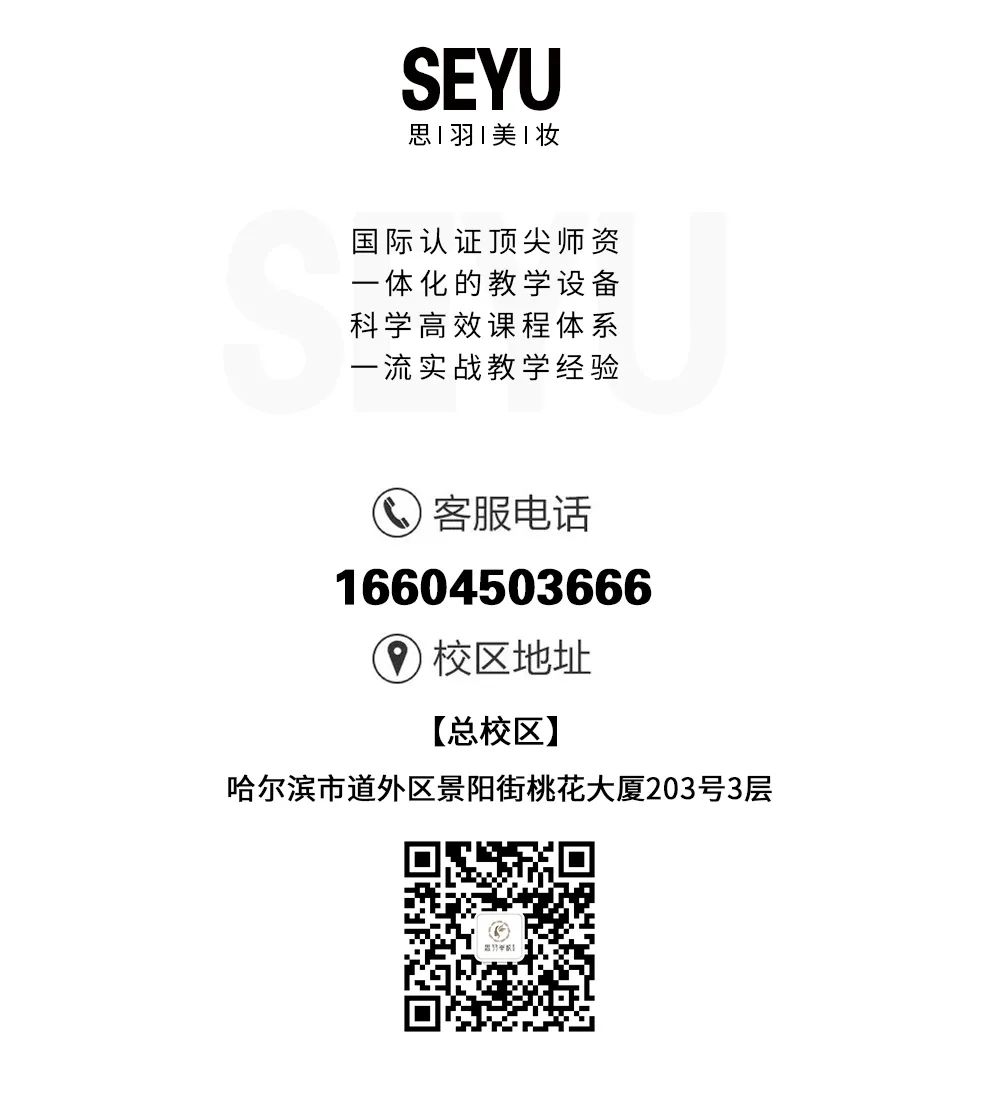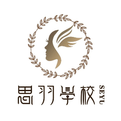If
we compare the body’s meridians to “highways”
then Gua Sha is the process of clearing the highways and removing waste.
After Gua Sha, the whole body feels relaxed!
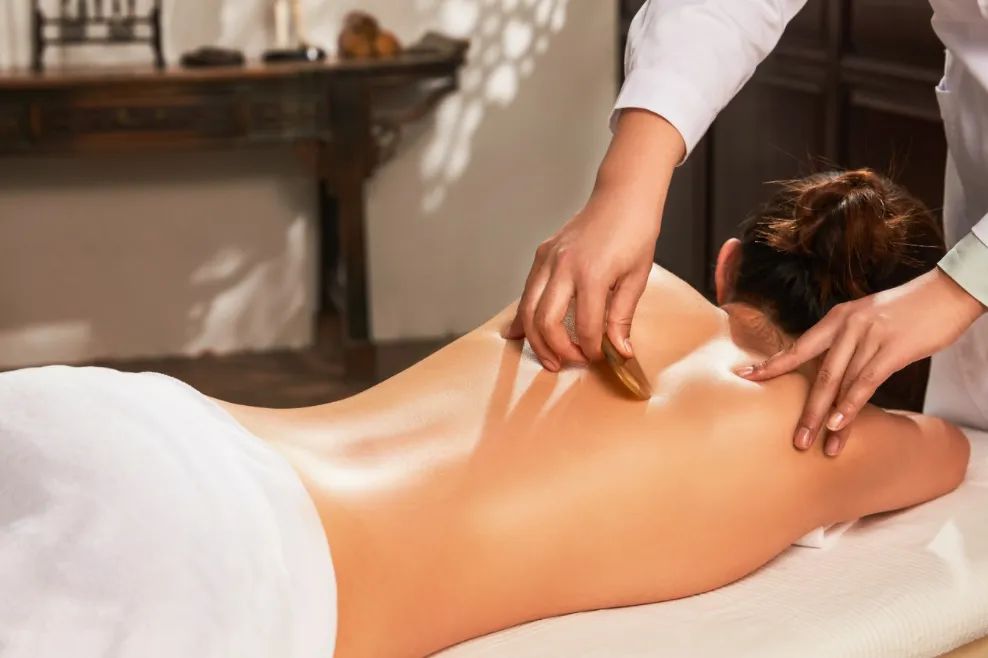
Why do Gua Sha?
“Stagnation leads to deficiency” is a characteristic of modern people’s constitution.
Modern individuals often consume excessive solid foods, leading to an overloaded digestive system. Coupled with irregular lifestyles, high work stress, excessive mental exertion, lack of physical activity, and insufficient sleep, the body is prone to fatigue and endocrine disorders. This results in an accumulation of metabolic waste, causing stagnation in the meridians and obstructing the flow of Qi and blood, leading to microcirculation disorders.
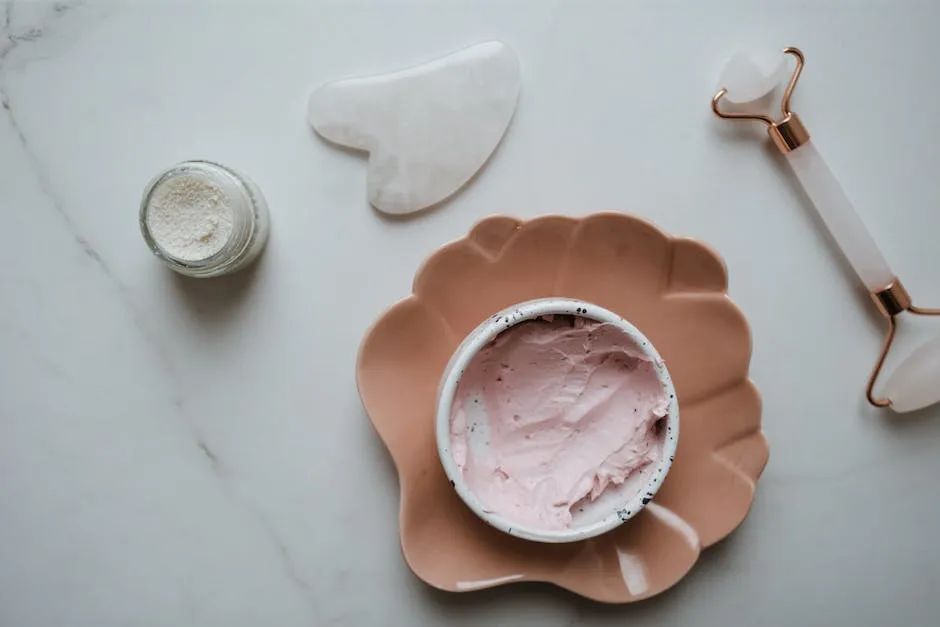
Gua Sha can quickly detoxify, improve microcirculation, invigorate blood flow, enhance immune regulation, and cleanse the internal environment, making it an excellent health technique suitable for the characteristics of modern individuals.
Gua Sha – Detox and Weight Loss!
Traditional Chinese Medicine (TCM) believes that the main cause of obesity is issues with the spleen and stomach’s transformation and transportation functions.
Problems with the spleen and stomach can lead to the accumulation of nutrients in specific areas, resulting in localized obesity, or can cause water metabolism issues leading to systemic obesity.
Gua Sha and cupping for weight loss primarily aim to open the spleen and stomach meridians, restoring their normal functions. Excess nutrients and water are metabolized, allowing the body to naturally lose weight.
1. Gua Sha Areas, mainly divided into three steps:
① On the back, the back-shu points, mainly Pi Shu (1.5 cun lateral to the spinous process of the 11th thoracic vertebra) and Wei Shu (1.5 cun lateral to the spinous process of the 12th thoracic vertebra).
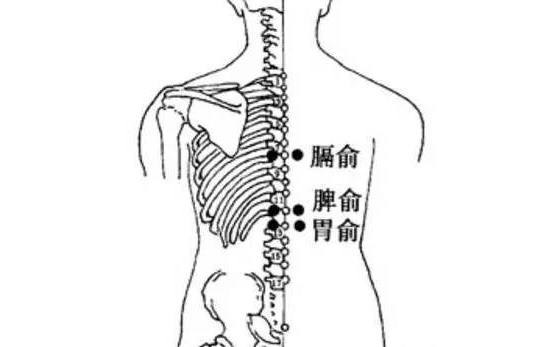
② Chest and abdomen, Zhang Men (free end of the 11th rib), Zhong Wan (4 cun above the umbilicus along the anterior midline);
③ Lower limbs, Yin Ling Quan (depression below the medial condyle of the tibia), San Yin Jiao (3 cun above the medial malleolus, along the posterior border of the tibia), Zu San Li (3 cun below the knee, 1 finger breadth lateral to the tibial tuberosity).
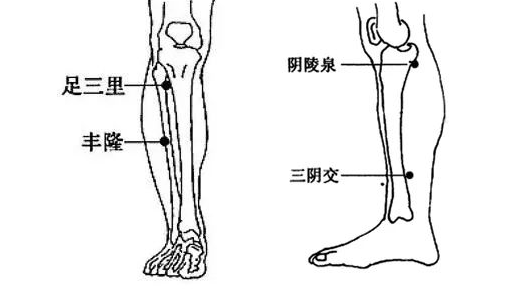
2. Method of Operation:
Perform Gua Sha on the above acupoints, mainly using the scraping method. Each area is generally scraped for 3-5 minutes, or scraped 10-15 times from top to bottom. During weight loss, the above acupoints are usually combined with cupping.
3. Special Reminder:
For those losing weight, controlling diet is also very necessary. Eat more fruits and vegetables, and less high-energy foods, but fasting or near-fasting is not advisable. Increasing aerobic exercise is also a good option.
Gua Sha – Breast Hyperplasia!
The pain and swelling of breast hyperplasia occur in the breast, but the root cause lies in the back projection of both breasts.
Gua Sha and cupping treatment for breast hyperplasia mainly aim to eliminate the “root cause” in the back, that is, using Gua Sha and cupping to clear the back meridians and remove the “root cause”.
1. Gua Sha Areas:
On both sides of the back projection of the breasts, mainly from the 3rd to the 7th thoracic vertebra, 1.5 cun lateral to the midline of the back.
2. Method of Operation:
Gua Sha and cupping in this area, if many nodules are found under the skin, use the scraping method and cupping. Each area should be controlled to 3-5 minutes for Gua Sha and cupping can be left for 10 minutes.
3. Special Reminder:
The occurrence of breast hyperplasia is related to factors such as whether to marry, breastfeed, or multiple abortions, so it is important to pay attention to life and go with the flow. Eating high-energy foods and long-term emotional depression are also causes of its occurrence, so it is important to control diet and maintain an optimistic mindset.
Gua Sha – Dysmenorrhea (Menstrual Irregularities)!
Dysmenorrhea (menstrual irregularities) is closely related to liver Qi stagnation, which can cause Qi stagnation and subsequently blood stasis.
TCM states that if there is no flow, there is pain; thus, liver Qi stagnation leading to blood stasis is the main cause of dysmenorrhea (menstrual irregularities). Gua Sha and cupping can quickly soothe the liver, regulate Qi, and clear stagnation, allowing the Qi and blood to flow smoothly, thereby alleviating or curing dysmenorrhea.
1. Gua Sha Areas:
① On the back, Gan Shu (1.5 cun lateral to the spinous process of the 9th thoracic vertebra);
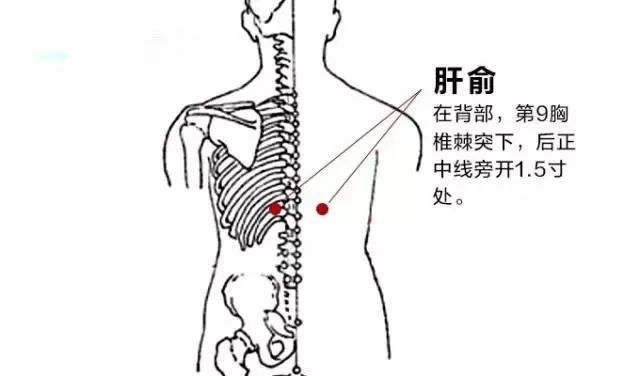
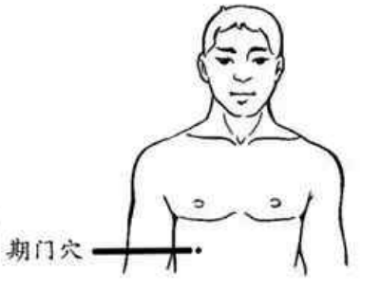
② Chest, Qi Men (on the midline of the clavicle, at the 6th intercostal space); the third step: Tai Chong of the foot Jue Yin liver meridian.
2. Method of Operation:
Perform Gua Sha and cupping on the back Gan Shu; dysmenorrhea patients generally have nodules near the Gan Shu point, which can vary in size. Cupping should be applied to the areas with noticeable nodules, generally left for 10-15 minutes.
3. Special Reminder:
Many dysmenorrhea patients are related to mental tension and anxiety, which is greatly influenced by the fast pace of modern work and life. Therefore, it is important to learn to relax, and to balance work with rest. Additionally,
long-term exposure to air conditioning, especially in summer when wearing little clothing in low temperatures, along with a preference for cold drinks, are significant causes of dysmenorrhea. Avoiding prolonged exposure to low temperatures and reducing cold drink consumption are important preventive measures against dysmenorrhea.
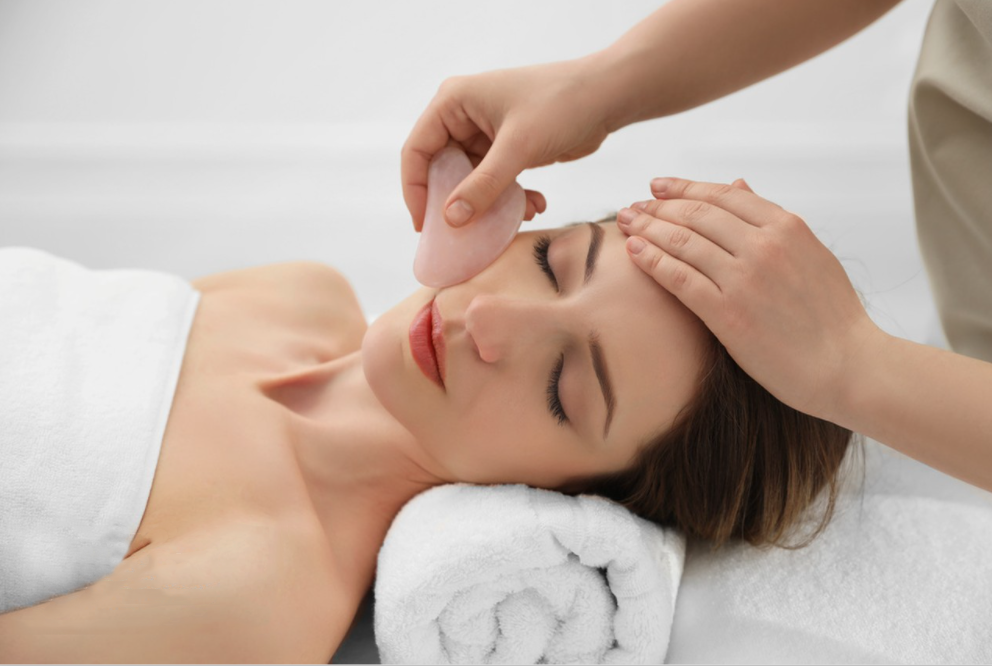
Gua Sha – Treating Acne!
Having acne on the face is something that many women cannot tolerate; acne, commonly known as pimples, is medically referred to as acne vulgaris.
TCM believes that the lungs govern the skin, and if there is lung heat, it can lead to acne on the face. The causes of lung heat can vary, such as external wind-heat, excessive consumption of spicy foods, or constipation leading to heat transferring to the lungs. Therefore, skin issues are primarily treated through the lungs, and since the lungs and large intestine are interrelated, addressing heat in the large intestine that transfers to the lungs is also necessary.
Thus, Gua Sha for acne primarily targets the lungs and large intestine.
1. Gua Sha Areas:
① On the back, Fei Shu (1.5 cun lateral to the spinous process of the 3rd thoracic vertebra); Da Chang Shu (1.5 cun lateral to the spinous process of the 4th lumbar vertebra);
② Chest, Zhong Fu (upper outer area of the chest, 6 cun from the Ren meridian), Tian Shu (2 cun beside the umbilicus);
③ Inner side of the upper limb Chi Ze, outer side Zhi Gu.
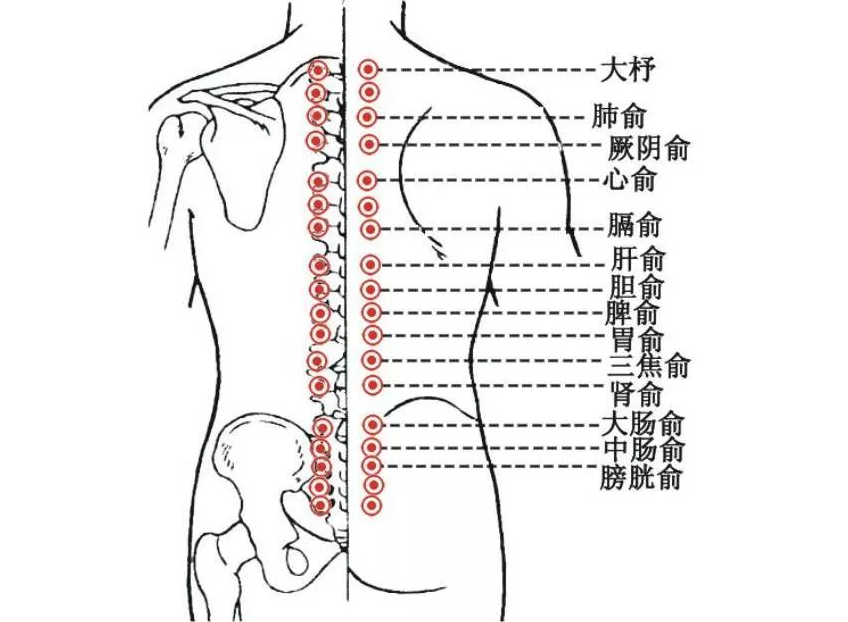
2. Method of Operation:
Perform Gua Sha and cupping on the back Fei Shu and Da Chang Shu; on Zhong Fu and Tian Shu mainly use cupping; Chi Ze mainly for Gua Sha and cupping, Zhi Gu mainly for scraping with a Bian stone scraping board.
3. Special Reminder:
It is advisable to maintain a light vegetarian diet, avoiding spicy, barbecued, and greasy foods during treatment, quitting smoking and alcohol, and minimizing strong tea consumption. Avoid using strong alkaline soaps for washing the face; do not use oily skincare products; and do not squeeze pimples with hands or other tools.
Gua Sha – Anti-Aging and Beauty!
There are many methods for anti-aging and beauty, but starting with the spleen is a very good choice.
TCM states that the spleen and stomach are the foundation of postnatal life. One of the spleen’s functions is to transport the essence of food throughout the body. When the spleen’s transformation and transportation functions are normal, not only are the muscles strong and the limbs powerful, but the skin also has good elasticity and a rosy complexion.
Another function of the spleen is that it “opens to the mouth” and “its manifestation is on the lips.” When the spleen functions well, Qi and blood are sufficient, resulting in rosy and shiny lips.
Therefore, to achieve anti-aging and beauty, the spleen’s function is very important.
1. Gua Sha Areas, focusing on three important acupoints of the spleen meridian:
Xue Hai: The gathering place of blood, this acupoint is the sea where spleen blood converges, just like rivers flowing into the sea, and it is named for its treatment of blood disorders.
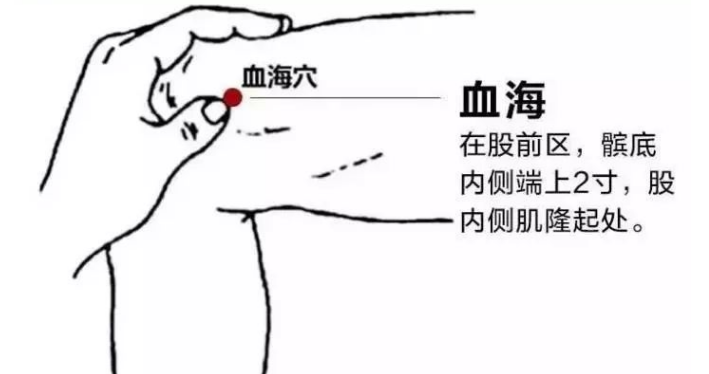
This acupoint is located 2 cun above the upper edge of the patella, at the bulge of the medial head of the quadriceps muscle, belonging to the foot Tai Yin spleen meridian. Stimulating Xue Hai can treat dry skin.
Dry skin is often caused by blood deficiency leading to wind or poor blood circulation and stagnation in the meridians. Stimulating Xue Hai can nourish blood and relieve stagnation, ensuring smooth blood flow and balance of Yin and Yang, thus alleviating dry skin.
Additionally, stimulating Xue Hai has satisfactory therapeutic effects on gynecological diseases such as menstrual irregularities, dysmenorrhea, and amenorrhea.
Yin Ling Quan: The prominence is like a mound, and the acupoint beside it is high like a “mound”. The depression below the prominence is like a deep spring, and it is named accordingly.
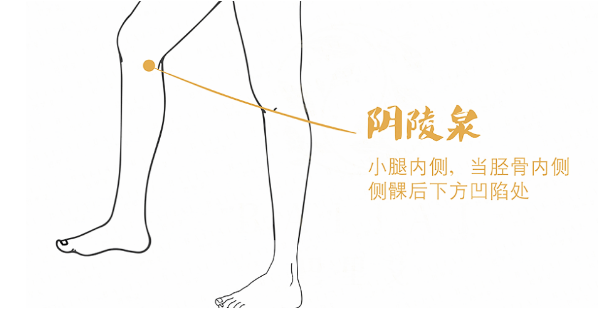
This acupoint is located in the depression below the medial condyle of the tibia and is the meeting point of the foot Tai Yin spleen meridian. The meeting point belongs to the water element in the five elements, which is related to the water metabolism of the kidneys and bladder. Stimulating Yin Ling Quan promotes the transformation and distribution of water and fluids by the spleen, kidneys, and bladder, helping to keep the skin moist.
San Yin Jiao: San Yin Jiao is the intersection of the three Yin meridians of the spleen, liver, and kidneys, hence its name.
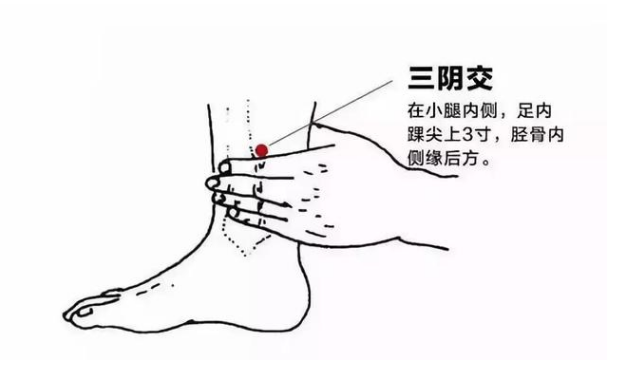
This acupoint is located 3 cun above the highest point of the medial malleolus, along the posterior border of the tibia, belonging to the foot Tai Yin spleen meridian. It has the effects of regulating Qi, nourishing blood, strengthening the spleen, promoting dampness, and soothing the liver and kidneys. It has a good effect on improving a dull complexion.
2. Method of Operation:
The above three acupoints can be treated with Gua Sha and cupping; and use a Bian stone scraping board for point pressing. When pressing the acupoints, the recipient should feel a sensation of soreness, numbness, swelling, or pain for it to be effective.
3. Special Reminder:
Many women now believe that using expensive products is the key to beauty, which is incorrect. For example, taking tonics when one is not deficient can lead to health issues. Even if one is deficient, it is important to identify the type of deficiency. TCM differentiates between Qi deficiency, Yang deficiency, Yin deficiency, and blood deficiency. If one has Qi deficiency, consuming tonics that nourish Yin, such as black fish or soft-shelled turtle, is also inappropriate.
Gua Sha – Uterine Fibroids!
The principle of Gua Sha and cupping treatment for uterine fibroids is similar to that for breast hyperplasia. Although the issue is in the uterus, the root cause lies in the lumbar and sacral regions that project to both sides of the uterus.
The treatment for uterine fibroids mainly aims to eliminate the “root cause” in the lumbar and sacral regions, that is, using Gua Sha and cupping to clear the meridians in the lumbar and sacral areas and remove the “root cause”.
1. Gua Sha Areas:
On both sides of the lumbar and sacral regions, mainly from the second lumbar vertebra Shen Shu (1.5 cun lateral to the spinous process of the second lumbar vertebra) to the sacral Pang Guang Shu.
2. Method of Operation:
Perform Gua Sha and cupping in this area; if many nodules are found under the skin, cupping can be applied, which can be left for 10-15 minutes.
3. Special Reminder:
Patients with uterine fibroids should avoid pregnancy, as it can be dangerous. They should also avoid estrogen to prevent the growth of fibroids. It is important to rest and avoid excessive fatigue, especially during menstruation. Maintaining cleanliness and dryness in the external genitalia is crucial, and loose-fitting underwear is recommended.
Gua Sha – Cold Uterus and Infertility!
Gua Sha combined with moxibustion can help to unblock and warm the kidney meridian, thereby addressing the issue of cold uterus and infertility.

1. Gua Sha Areas:
Ming Men (located at the second lumbar vertebra), Shen Shu (1.5 cun lateral to the spinous process of the second lumbar vertebra), Guan Yuan (3 cun below the umbilicus along the anterior midline).
2. Method of Operation:
Perform Gua Sha on Ming Men, Shen Shu, and Guan Yuan, and after the Gua Sha, apply moxibustion on these acupoints.
The duration of moxibustion varies by individual; for patients with cold uterus and infertility, due to the heavy cold, the moxibustion time can be longer, as long as the local skin does not feel a burning sensation, it can be continued for half an hour to an hour, depending on the patient’s comfort.
Moxibustion is needed for cold symptoms, focusing on the navel and kidney transport points.
3. Special Reminder:
Those with cold uterus and infertility should avoid cold foods, minimize the use of air conditioning, as cold air can easily harm Yang Qi. Modern women often consume many cold and bitter foods for weight loss, which can significantly damage Yang Qi, often leading to cold uterus and infertility.
-THE END –
Images from the internet. If there is any infringement, please contact for removal.
